Letchworth State Park
- December 28, 2023
- 0 comment
Letchworth State Park is Located in western New York and is known as the “Grand Canyon of the East” due to its natural beauty. The park encompasses 14,427 acres and spans Livingston and Wyoming Counties. It is defined by a 17-mile stretch of the Genesee River that flows through a stunning gorge with cliffs towering up to 600 feet and three impressive waterfalls.
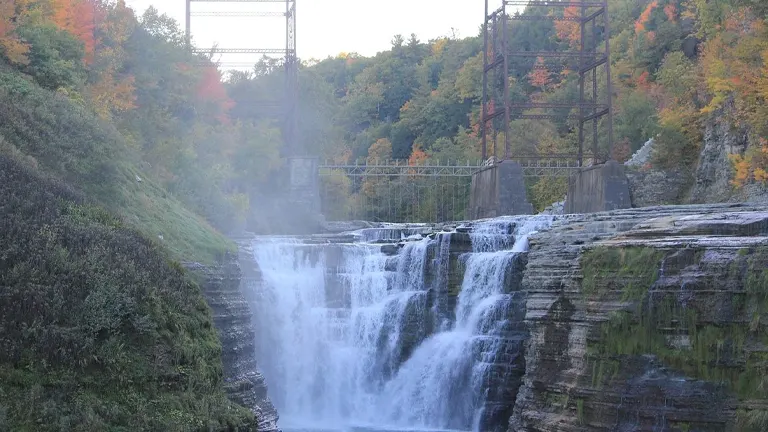
Recently, the park was recognized as the Best State Park in the country, and it offers a variety of activities for nature enthusiasts and adventure seekers, including hiking the scenic Gorge Trail or taking a hot-air balloon ride to see the panoramic views of the surrounding landscapes. In addition to its natural beauty, the park also has a rich history, such as the Glen Iris Inn, which was once the home of William Pryor Letchworth, a visionary who worked to conserve the park’s natural beauty. Letchworth State Park is a testament to the captivating beauty of the American landscape, blending geological wonders, rich history, and diverse recreational opportunities.
Characterizing Features of the Letchworth State Park
- Gorge and Waterfalls: The defining feature of Letchworth State Park is its stunning gorge, carved over time by the Genesee River. Spanning a 17-mile stretch, the gorge showcases the powerful force of nature, with cliffs soaring as high as 600 feet. Three major waterfalls—Upper, Middle, and Lower Falls—cascade through this geological wonder, adding a dynamic and mesmerizing element to the landscape. The rugged beauty of the gorge has earned Letchworth the moniker “Grand Canyon of the East.”
- Diverse Recreational Activities: Letchworth is not merely a passive spectacle; it invites visitors to engage in a myriad of recreational activities. With 66 miles of hiking trails, horseback riding, biking, and snowmobiling options, the park caters to outdoor enthusiasts year-round. From the thrill of whitewater rafting and kayaking to the tranquility of cross-country skiing, Letchworth offers a diverse range of experiences amidst its natural splendors.
- Campsites and Cabins: The park provides several hundred campsites and cabins, allowing visitors to immerse themselves in the beauty of nature overnight. Whether under the stars or surrounded by a blanket of snow, staying within Letchworth allows for an extended and intimate connection with the park’s landscapes. It’s an opportunity to wake up to the sounds of nature and witness the changing hues of the gorge at different times of the day.
- Humphrey Nature Center: Letchworth’s commitment to environmental education is embodied in the Humphrey Nature Center. Open year-round, this center serves as an educational hub, offering insights into the geology, wildlife, and ecology of the park. Interactive exhibits and programming provide visitors, including school groups and scouts, with a deeper understanding and appreciation of the natural world that thrives within Letchworth.
- Historic Landmarks: The park boasts historic landmarks, notably the Glen Iris Inn, the former residence of William Pryor Letchworth. Restored to its former glory, the inn offers not only overnight accommodations but also a glimpse into the history of the park’s preservation. Letchworth’s dedication to preserving its cultural heritage is further evident in the William Pryor Letchworth Museum, where exhibits delve into the natural and cultural history of the Genesee Valley.
- Recognition and Awards: Letchworth State Park has received national acclaim, earning the title of Best State Park in the United States in the USA TODAY Readers’ Choice Award. This recognition is a testament to the park’s exceptional beauty and the memorable experiences it provides to those who explore its trails, waterfalls, and cultural offerings. Such accolades underscore Letchworth’s significance on both a regional and national scale.
History
Letchworth State Park, established as a testament to the foresight of William Pryor Letchworth, has a nuanced history deeply intertwined with both natural preservation and cultural significance. In 1858, Letchworth first beheld the gorge-to-be from a train on a nearby railroad trestle. Inspired by the grandeur of the landscape, he swiftly acquired an initial 190 acres of land near the Portage Falls in 1859, signaling the beginning of his ambitious plan to create the Glen Iris Estate. Beyond merely thwarting the hydroelectric dam, Letchworth enlisted the services of landscape artist William Webster to design meandering paths, rustic bridges, and glistening “lakes.” His commitment to preserving the fragile nature of the gorge extended to halting the construction of a railroad through the park, further safeguarding its pristine beauty.
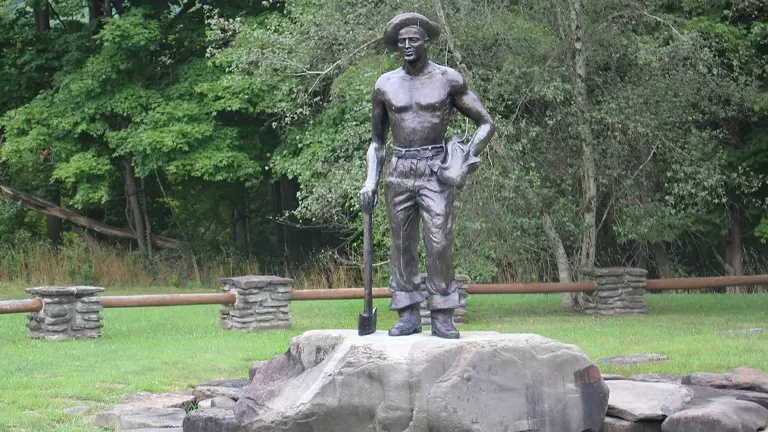
Expanding his landholdings over the years, Letchworth gifted the Glen Iris and surrounding 1,000 acres to the State of New York in 1906, stipulating that it be managed by the American Scenic and Historic Preservation Society. This far-reaching act not only protected the geological wonders of the gorge but also ensured the preservation of the park’s cultural heritage. Letchworth’s contributions extended beyond the creation of the park itself; he facilitated the relocation and rededication of Mary Jemison’s grave, a Scots-Irish immigrant pioneer captured during the French and Indian War, providing a link to the region’s Native American history.
In 2015, the park received the prestigious USA TODAY Readers’ Choice Award for Best State Park in the United States, underscoring its enduring legacy and significance in the realm of national parks. Letchworth State Park stands today as a harmonious blend of geological marvels, cultural heritage, and the forward-thinking vision of one man, continuing to captivate visitors with its timeless allure.
Importance in Conservation and Recreation of Letchworth State Park
Letchworth State Park holds profound importance as a harmonious intersection of conservation and recreation. Encompassing 14,427 acres in western New York, the park’s inception, driven by William Pryor Letchworth’s vision in 1906, marked a pivotal moment in environmental preservation. Beyond safeguarding a 17-mile stretch of the Genesee River gorge, Letchworth ensured the protection of diverse ecosystems and geological wonders, including the towering cliffs and three majestic waterfalls. This commitment to conservation has transformed Letchworth into a living laboratory, allowing visitors to witness the delicate balance of nature and serving as a refuge for countless plant and animal species.
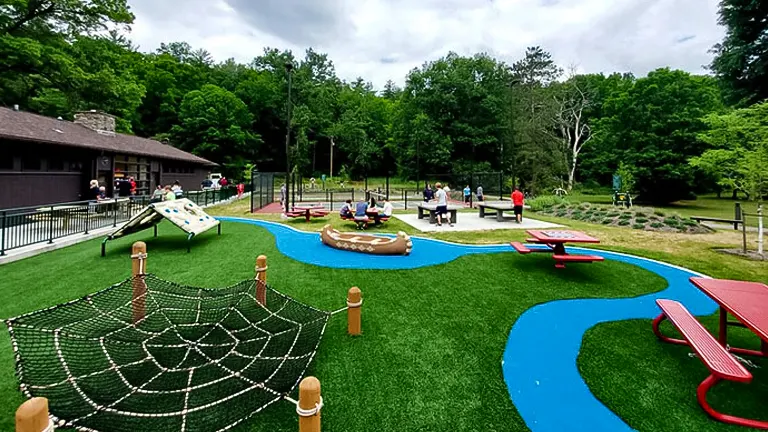
Simultaneously, the park thrives as a recreational haven, offering an extensive network of hiking trails, horseback riding paths, and winter activities, attracting outdoor enthusiasts from near and far. The diverse landscapes, coupled with opportunities for camping, snowmobiling, and hot-air ballooning, make Letchworth a year-round destination for adventure seekers. The balance struck between conservation and recreation at Letchworth State Park epitomizes a model of sustainable land management, demonstrating that the preservation of natural wonders can seamlessly coexist with the provision of enriching recreational experiences, ensuring the park’s enduring relevance for generations to come.
Unique Location of Letchworth State Park
Located in Western New York, Letchworth State Park occupies a truly unique location that sets it apart as a geological masterpiece. Spanning Livingston and Wyoming Counties, the park stretches along a 17-mile corridor carved by the Genesee River. This extraordinary landscape, characterized by towering cliffs, lush forests, and the mesmerizing flow of the river, has earned Letchworth the moniker “Grand Canyon of the East.” Positioned just 35 miles southwest of Rochester and 60 miles southeast of Buffalo,
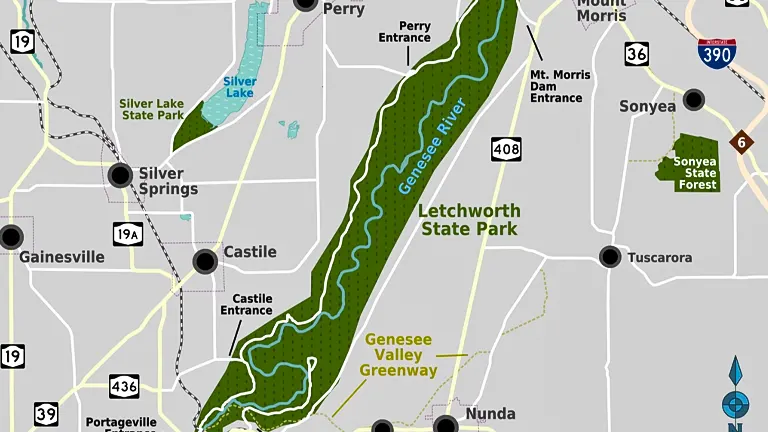
Letchworth’s accessibility enhances its allure, drawing visitors into a world where the dramatic interplay of nature unfolds against a backdrop of historic charm. The park’s location, with entrances near Mount Morris, Perry, Castile, and Portageville, facilitates a journey through a varied terrain, offering visitors a unique and immersive experience as they explore the diverse ecosystems, waterfalls, and cultural landmarks that define this extraordinary slice of natural beauty in western New York.
Diverse Vegetation and Unique Plant Species:
- Hemlock Trees (Tsuga canadensis): Commonly known as the Eastern Hemlock, is a prominent evergreen tree species found throughout Letchworth State Park. These majestic trees contribute to the park’s lush and diverse forested areas. The Eastern Hemlock provides critical habitat for various wildlife species and plays a significant role in shaping the park’s ecological balance.
- Mountain Laurel (Kalmia latifolia): The delicate and vibrant Mountain Laurel, scientifically known as Kalmia latifolia, graces Letchworth with its striking blooms. Found in the park’s understory, these flowering shrubs add a touch of elegance to the landscape. Their unique flowers and glossy leaves enhance the visual diversity of the flora within the park.
- Jack-in-the-Pulpit (Arisaema triphyllum): Jack-in-the-Pulpit is a distinctive plant species that can be spotted in the understory of Letchworth State Park. Recognizable by its hood-like structure, this perennial herbaceous plant contributes to the park’s botanical uniqueness. Its presence adds to the fascination of exploring the park’s diverse plant life.
- Trillium (Trillium): Letchworth is home to several species of Trillium, a genus of perennial flowering plants. These three-petaled wonders carpet the forest floor in spring, creating a picturesque scene. The scientific name Trillium reflects the plant’s characteristic three-part structure, adding both beauty and botanical interest to the park’s ecosystem.
- Allegheny Serviceberry (Amelanchier laevis): The Allegheny Serviceberry is a deciduous shrub found in Letchworth State Park. Characterized by its showy white blossoms in spring and edible berries, this plant contributes to the park’s ecological tapestry. The berries provide a valuable food source for wildlife, showcasing the interconnectedness of the park’s flora and fauna.
- Indian Pipe (Monotropa uniflora): The intriguing Indian Pipe is a mycoheterotrophic plant found in the shaded areas of Letchworth. Lacking chlorophyll, it obtains nutrients through a unique relationship with fungi. The ghostly appearance of the Indian Pipe adds an element of mystery to the park’s plant communities, emphasizing the diversity of life that thrives in its varied habitats.
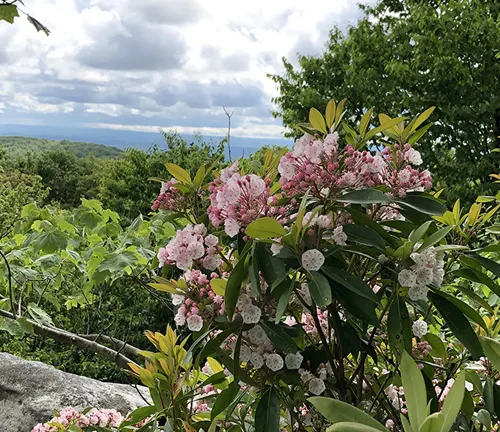
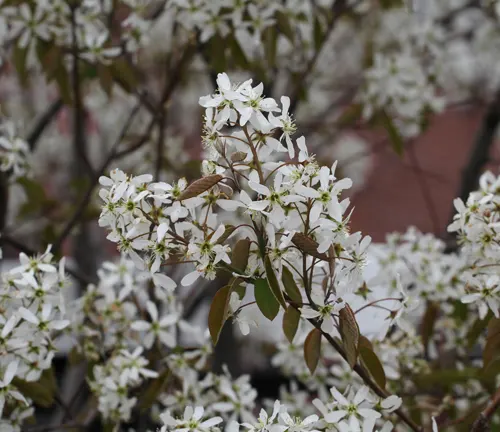
Different Species of Mushrooms in Letchworth State Park
- Fly Agaric (Amanita muscaria): The iconic red-capped mushroom with white spots, commonly known as Fly Agaric, can be found in the woodlands of Letchworth State Park. Although visually striking, this mushroom is toxic and known to attract flies, hence its name. Its presence adds a touch of enchantment to the forest floor, but caution is essential due to its toxicity.
- Hen of the Woods (Grifola frondosa): Hen of the Woods, or Grifola frondosa, is a sought-after edible mushroom that grows at the base of hardwood trees. In Letchworth, these mushrooms form large, overlapping clusters resembling the plumage of a nesting hen. For foragers, encountering Hen of the Woods is a culinary delight, as it is known for its rich and savory flavor.
- Chanterelle (Cantharellus spp.): Letchworth State Park is home to various species of Chanterelles, the golden-hued mushrooms. These mycorrhizal fungi form symbiotic relationships with trees and are prized for their mild, fruity flavor. The presence of Chanterelles adds a burst of color to the forest floor during the mushroom season, attracting both fungi enthusiasts and wildlife.
- Turkey Tail (Trametes versicolor): Turkey Tail, or Trametes versicolor, is a common bracket fungus found on dead wood in Letchworth. Its fan-shaped, multicolored caps resemble the tail feathers of a turkey. Beyond its aesthetic appeal, Turkey Tail is recognized for its medicinal properties and is used in traditional medicine for its potential immune-boosting benefits.
- Shaggy Mane (Coprinus comatus): The distinctive Shaggy Mane, known as Coprinus comatus, is a fascinating mushroom that thrives in grassy areas of the park. Recognizable by its tall, shaggy cap, this mushroom undergoes a unique process of autodigestion, turning into an inky black substance as it matures. Its ephemeral nature adds an element of intrigue to the park’s fungal diversity.
- Reishi (Ganoderma spp.): Various species of the Ganoderma genus, commonly known as Reishi mushrooms, can be found on decaying hardwoods in Letchworth. Revered in traditional medicine, Reishi is believed to have various health benefits. Its distinctive, glossy cap and woody texture contribute to the park’s diverse mushroom population, highlighting the interconnectedness of fungi and the forest ecosystem.
Fauna:
- White-Tailed Deer (Odocoileus virginianus): The graceful White-Tailed Deer is a common sight in Letchworth State Park. These herbivores thrive in the diverse habitats of the park, from open meadows to wooded areas, contributing to the park’s thriving ecosystem. Visitors often encounter these majestic creatures as they graze or meander through the park’s picturesque landscapes.
- Eastern Gray Squirrel (Sciurus carolinensis): The ubiquitous Eastern Gray Squirrel is a lively presence in Letchworth. Whether scampering through the trees or foraging on the forest floor, these adaptable rodents contribute to the park’s dynamic wildlife scene. Their acrobatic antics often entertain visitors exploring the trails.
- Bald Eagle (Haliaeetus leucocephalus): Letchworth State Park is a haven for avian enthusiasts, with the majestic Bald Eagle soaring through its skies. The scientific name, Haliaeetus leucocephalus, reflects the bird’s striking appearance with its white head. These raptors, often spotted near the park’s waterways, showcase the success of conservation efforts and add a touch of grandeur to the park’s birdlife.
- Eastern Box Turtle (Terrapene carolina carolina): The Eastern Box Turtle is a slow and steady resident of Letchworth, navigating its way through the wooded areas and meadows. Recognizable by its distinctive domed shell, this turtle species contributes to the park’s biodiversity. Encounters with these reptiles offer a glimpse into the park’s intricate web of life.
- Great Blue Heron (Ardea herodias): The elegant Great Blue Heron graces the waterways of Letchworth State Park. These wading birds, with their impressive stature and long bills, are a common sight along the riverbanks and contribute to the park’s diverse bird population. Their patient and deliberate hunting techniques captivate birdwatchers and nature enthusiasts.
- Eastern Coyote (Canis latrans): The elusive Eastern Coyote roams the varied landscapes of Letchworth, showcasing the park’s role as a habitat for carnivores. Known for their adaptability, these canines are skilled hunters and add a wild and untamed element to the park’s fauna. Observing their behaviors provides insight into the delicate balance of predator and prey within the park’s ecosystems.
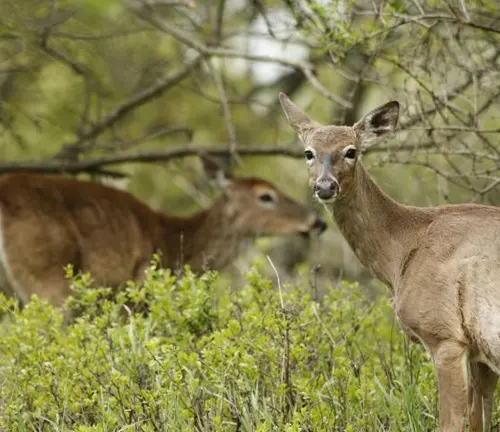
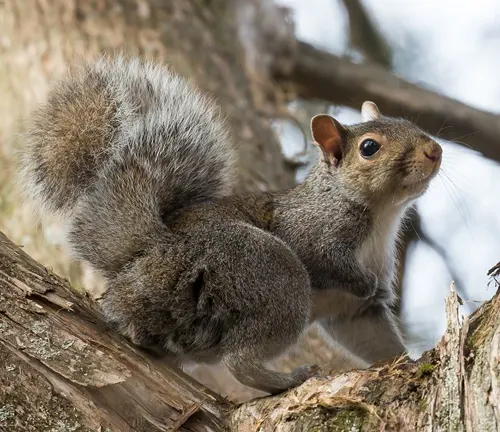
Importance as a Wildlife Corridor and Habitat for Threatened Species
Letchworth State Park serves a crucial role as both a wildlife corridor and a sanctuary for threatened species, playing a pivotal part in regional biodiversity and conservation efforts. Its expansive and varied landscapes, encompassing meadows, woodlands, and riverbanks, form a natural corridor that facilitates the movement of wildlife. This connectivity is vital for species like the White-Tailed Deer, Eastern Coyote, and Eastern Gray Squirrel, allowing them to traverse the park freely. Additionally, Letchworth’s diverse habitats provide essential breeding grounds and shelter for a variety of bird species, including the majestic Bald Eagle and the patient Great Blue Heron.
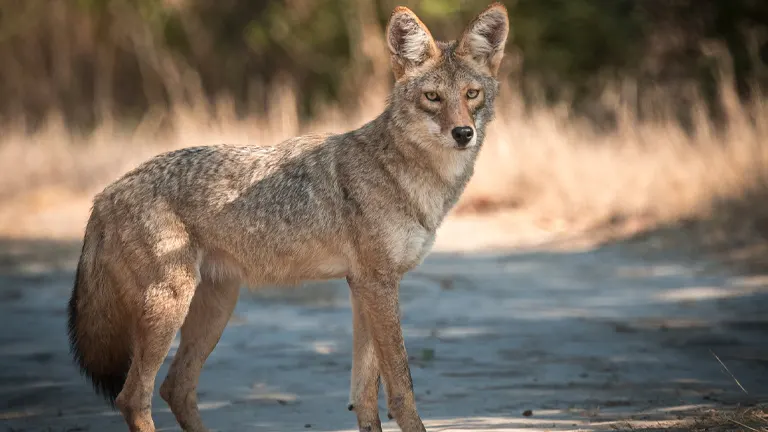
The park’s ecological significance extends further as it harbors populations of threatened and sensitive species, contributing to their survival. Whether providing a haven for the Eastern Box Turtle or offering refuge for plant species such as the Indian Pipe, Letchworth State Park stands as a resilient refuge, exemplifying the delicate balance between conservation and recreation. Its role as a wildlife corridor not only sustains regional biodiversity but also underscores the importance of preserving natural spaces for the well-being of both the flora and fauna that call it home.
Activities in Letchworth State Park for Visitors
1. Hiking
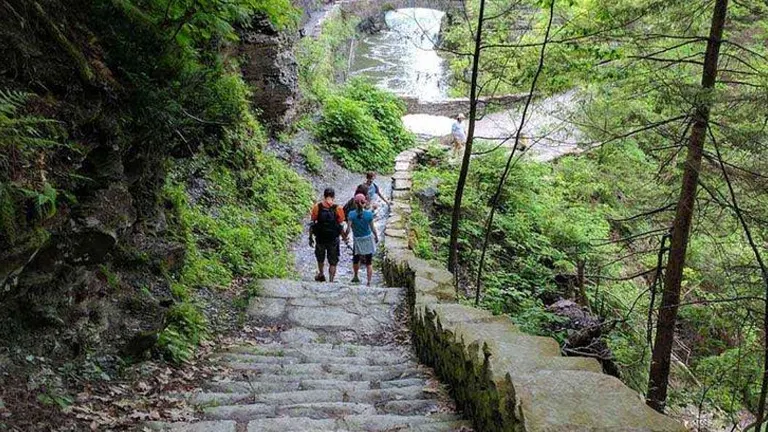
Letchworth State Park boasts an extensive network of 66 miles of hiking trails, ranging from leisurely strolls to challenging hikes. The park’s trails wind through diverse landscapes, offering visitors the chance to explore the iconic gorge, dense woodlands, and scenic meadows. The Gorge Trail, a seven-mile trek, presents breathtaking views of the waterfalls and is a favorite among hikers seeking a captivating adventure.
2. Whitewater Rafting and Kayaking
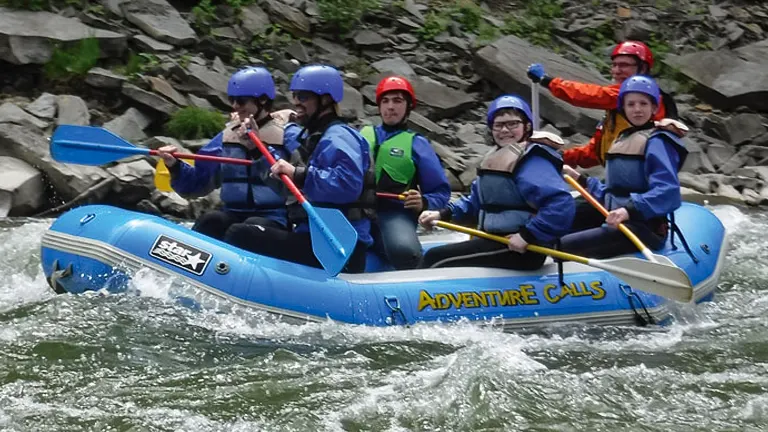
For those seeking an adrenaline rush, Letchworth’s Genesee River provides an exhilarating playground for whitewater enthusiasts. Guided whitewater rafting and kayaking excursions navigate the thrilling rapids, allowing visitors to experience the park’s natural beauty from a unique and dynamic perspective. The river’s twists and turns, surrounded by towering cliffs, create an unforgettable aquatic adventure.
3. Wildlife Watching
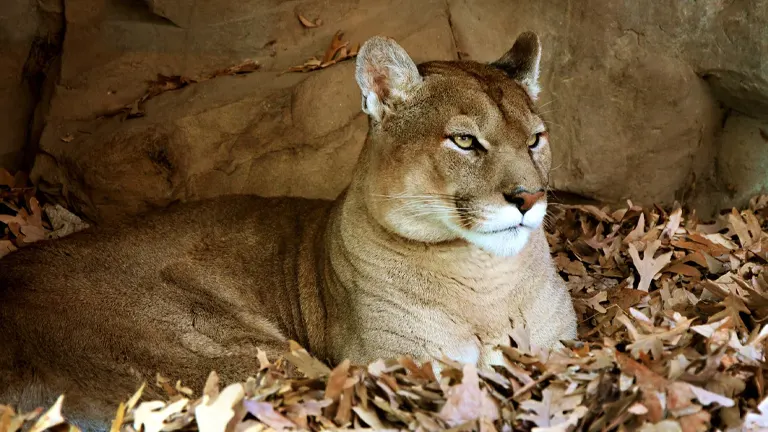
Letchworth serves as a haven for wildlife enthusiasts, offering opportunities to observe a diverse array of fauna. From the iconic White-Tailed Deer grazing in meadows to the graceful Great Blue Heron patrolling the riverbanks, the park’s varied habitats provide a rich tapestry of wildlife. Birdwatchers can spot eagles soaring overhead, adding an extra layer of excitement to the park’s vibrant ecosystem.
4. Hot-Air Ballooning
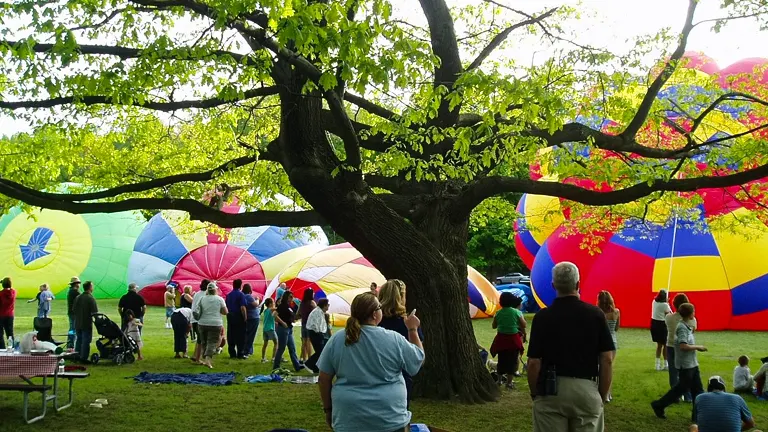
Elevating the visitor experience to new heights, hot-air ballooning in Letchworth provides a panoramic view of the park’s sprawling landscapes. Drifting over the gorge and waterfalls, participants can witness the beauty of the Genesee River and lush woodlands from an aerial perspective. The tranquility of a hot-air balloon ride complements the park’s serene ambiance, creating an unforgettable journey.
5. Camping and Cabins
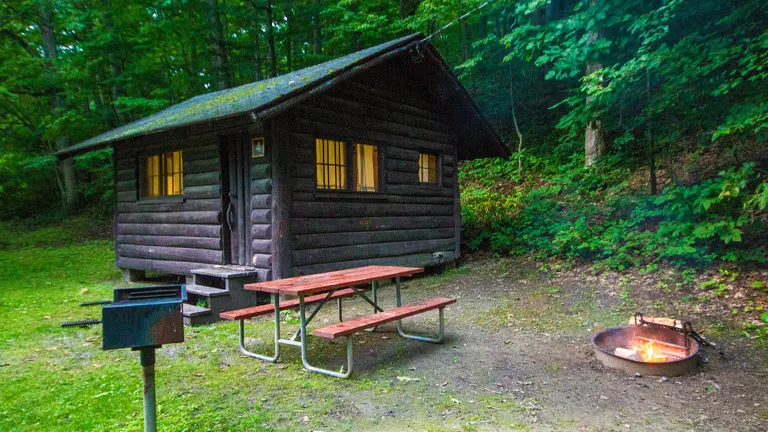
Letchworth offers several hundred campsites and cabins, inviting visitors to extend their stay and immerse themselves in the park’s natural beauty. Whether camping under the stars or staying in a cozy cabin, overnight guests have the unique opportunity to experience the changing moods of the gorge, from the vibrant hues of sunrise to the tranquility of a moonlit night.
6. Winter Activities

Embracing the winter season, Letchworth provides a winter wonderland for outdoor enthusiasts. Snow tubing, cross-country skiing, and snowmobiling transform the park into a snowy playground. The serene beauty of the gorge, draped in snow, offers a serene backdrop for winter activities, making Letchworth a year-round destination for nature lovers.
Letchworth State Park’s diverse array of activities ensures that visitors can tailor their experience to their interests, creating lasting memories within the captivating embrace of this natural gem.
Conservation and Management
- Habitat Preservation: Letchworth State Park prioritizes habitat preservation as a cornerstone of its conservation efforts. The park’s vast and varied landscapes, including the iconic gorge, meadows, and woodlands, are carefully managed to maintain the delicate balance of ecosystems. Strategies such as controlled burns in meadow areas and invasive species management contribute to the preservation of native flora and fauna, ensuring the long-term health of the park’s habitats.
- Wildlife Corridor Management: Recognizing the importance of maintaining wildlife corridors for regional biodiversity, Letchworth employs measures to enhance connectivity within the park. This includes the strategic placement of wildlife crossings and habitat restoration initiatives to facilitate the movement of species such as White-Tailed Deer and Eastern Coyotes. By safeguarding these corridors, the park contributes to the broader goal of wildlife conservation beyond its borders.
- Endangered Species Protection: Letchworth State Park actively participates in the protection of endangered and threatened species within its boundaries. Collaborating with wildlife experts and conservation organizations, the park implements monitoring programs and habitat restoration projects to support the survival of vulnerable species. From rare plants to elusive animals, these conservation efforts contribute to the preservation of the park’s biological diversity.
- Visitor Education and Outreach: Central to Letchworth’s conservation mission is the engagement of visitors in understanding and appreciating the park’s natural resources. Interpretive programs, guided walks, and educational exhibits at the Humphrey Nature Center provide valuable insights into the park’s ecosystems, geology, and the importance of conservation. By fostering a sense of stewardship among visitors, the park cultivates a community dedicated to the preservation of this ecological treasure.
- Sustainable Recreation Practices: Letchworth places a strong emphasis on sustainable recreation practices to minimize the environmental impact of visitor activities. Trail maintenance, erosion control, and waste management initiatives are integral components of the park’s management strategy. By promoting responsible recreation, the park ensures that the beauty and ecological integrity of Letchworth are preserved for future generations to enjoy.
- Research and Monitoring Programs: The park actively engages in scientific research and monitoring programs to assess the health of its ecosystems. This includes studies on plant populations, wildlife behavior, and the impact of environmental factors. By staying informed through ongoing research, Letchworth adapts its conservation strategies to address emerging challenges and continue its role as a model of sustainable land management.
Letchworth State Park’s commitment to conservation and management reflects a holistic approach that encompasses habitat preservation, wildlife protection, education, sustainable practices, and ongoing research. Through these initiatives, the park not only preserves its own ecological integrity but also contributes to the broader goals of regional and national conservation efforts.
Recommendation
I highly recommend exploring Letchworth State Park for a captivating convergence of natural beauty and historical significance. Celebrated for its diverse landscapes, iconic waterfalls, and a plethora of recreational activities, the park offers a unique and immersive adventure. Engage in reflective outdoor activities such as hiking and wildlife observation, becoming an active participant in the park’s ongoing conservation efforts. The scenic trails, historical landmarks, and collaborative conservation programs make Letchworth State Park a crucial destination for those seeking a harmonious blend of nature and recreational exploration.
Conclusion
Letchworth State Park is a testament to the beauty of nature that combines geological wonders, diverse ecosystems, and a rich cultural history. The park offers an immersive experience that goes beyond the ordinary with majestic waterfalls, picturesque trails, and a meandering river. As the “Grand Canyon of the East,” Letchworth showcases the perfect balance between conservation and recreation. From the vibrant flora and fauna to the thoughtful preservation efforts, the park invites visitors to explore, contemplate, and appreciate the delicate balance between humans and nature. Whether you’re looking for the adrenaline rush of whitewater rafting or the serene experience of a nature walk, Letchworth State Park offers a haven for all who want to reconnect with the wonders of the natural world. It stands as a living testament to the importance of preserving our natural heritage for generations to come.
Encouraging Responsible Visitation
Contemplating my experiences within Letchworth State Park, I am motivated to endorse purposeful exploration. This ever-changing and vibrant natural environment thrives when individuals actively engage with the park’s diverse features. Whether you’re an avid hiker, a photography enthusiast, or a family looking for a weekend retreat, each moment spent in Letchworth State Park presents a chance to play a role in its ongoing conservation initiatives.
FAQs
- What makes Letchworth State Park known as the “Grand Canyon of the East”?
Letchworth is dubbed the “Grand Canyon of the East” due to its stunning gorge carved by the Genesee River, featuring cliffs as high as 600 feet, three major waterfalls, and a landscape reminiscent of the iconic Grand Canyon. - Can I go hot-air ballooning in Letchworth State Park?
Yes, Letchworth offers hot-air ballooning experiences, providing a unique and breathtaking perspective of the park’s scenic beauty. Weather permitting, this activity allows visitors to soar above the gorge and waterfalls. - How many miles of hiking trails are there in Letchworth State Park?
Letchworth boasts an extensive network of 66 miles of hiking trails. Ranging from easy walks to challenging hikes, these trails lead visitors through diverse landscapes, showcasing the park’s natural wonders. - Are there camping facilities in Letchworth State Park?
Yes, Letchworth provides several hundred campsites and cabins for visitors who wish to extend their stay. Whether camping under the stars or staying in a cabin, guests can immerse themselves in the park’s natural beauty. - What wildlife can I expect to see in Letchworth State Park?
Letchworth is home to diverse wildlife, including White-Tailed Deer, Eastern Coyotes, Great Blue Herons, and Bald Eagles. The park’s varied habitats make it a haven for wildlife enthusiasts and birdwatchers. - How can I contribute to conservation efforts in Letchworth State Park?
Visitors can actively contribute to conservation by practicing responsible recreation, joining organized clean-up events, and participating in educational programs offered by the park. These efforts help preserve the park’s natural integrity. - Are there winter activities available in Letchworth State Park?
Yes, Letchworth transforms into a winter wonderland, offering activities such as snow tubing, cross-country skiing, and snowmobiling. The park’s serene landscapes draped in snow provide a picturesque backdrop for winter enthusiasts. - What historical landmarks are present in Letchworth State Park?
The park features the Glen Iris Inn, a historic, completely restored residence overlooking Middle Falls. Additionally, the William Pryor Letchworth Museum showcases the cultural and natural history of the Genesee Valley, adding a historical dimension to the park experience.
If you’re looking for a truly breathtaking outdoor experience, Letchworth State Park is a must-visit destination. From the stunning waterfalls to the meandering river and the diverse array of flora and fauna, you’ll be struck by the sheer beauty of nature in all its glory. Whether you’re an adrenaline junkie seeking whitewater rafting or a nature lover looking for a peaceful hike, Letchworth has something to offer everyone. As you explore this remarkable park, you’ll be struck not only by its natural wonders but also by the thoughtful efforts to preserve and protect it for future generations. Letchworth State Park is not just a destination but a living testament to the enduring importance of conservation and the beauty of the natural world.InsertRephrase


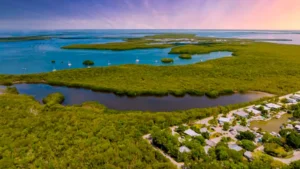
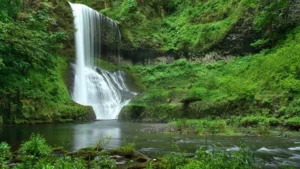

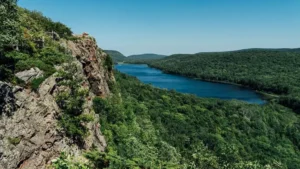
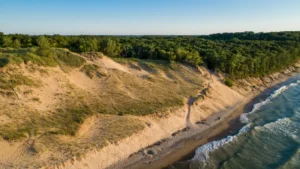
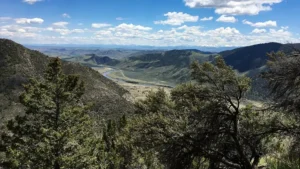


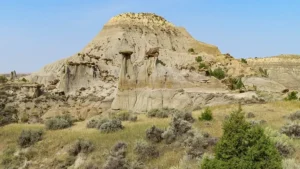

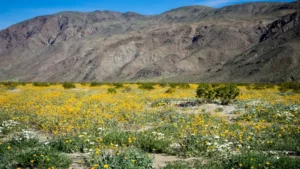
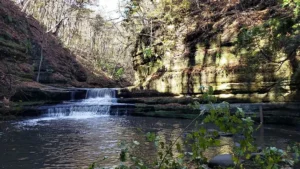
Leave your comment